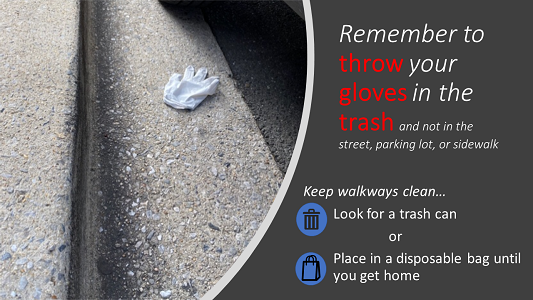Stormwater Discharges from Transportation Sources

Streets, roads, and highways are the primary mode for moving goods, people, and services but also can carry stormwater runoff pollutants from the adjacent land and from cars, trucks, and buses, including heavy metals from tires, brakes, and engine wear, and hydrocarbons from lubricating fluids. If the pollutants are not properly controlled, they can impair waters causing them to no longer support the water's designated uses and biotic communities.
Similar to traditional stormwater management authorities (cities and counties), transportation authorities are also responsible for managing the stormwater runoff that discharges to our nation's waters via regulated municipal separate storm sewer systems (MS4s) along streets, roads, and highways, but there are some key differences:
Transportation MS4s versus Traditional MS4s
|
Topic |
(NonTraditional) Transportation MS4 |
(Traditional) City/County MS4 |
|---|---|---|
|
Location |
State transportation agencies often own streets and highways that can stretch for many miles, and cross numerous waterways, watersheds, and jurisdictions |
Local governments are typically responsible for streets they own, which are usually in a limited geographical area |
|
Population served by MS4 |
State transportation agencies often serve a transient population of drivers and passengers |
Local governments often serve residents and businesses in their community boundaries |
|
Authorities |
State transportation agencies have little to no enforcement authority to implement ordinances and must use other mechanisms |
Local government can develop and implement ordinances that they then enforce in their community boundaries |
An integrated approach is needed to address these challenges and strengthen stormwater management programs (SWMPs). This site provides access to transportation-specific stormwater information primarily for state transportation agencies, but county and local transportation authorities will also find it useful.
Regulations, Permits, and Programs
The NPDES program requires operators of regulated transportation MS4s to reduce the discharge of pollutants from their MS4 to the maximum extent practicable. They must each establish a comprehensive SWMP under their NPDES permit. Most states are authorized to administer their own stormwater permitting programs. EPA remains the permitting authority in New Hampshire, Massachusetts, New Mexico, Idaho, territories, and on most Indian Country lands.
- Municipal MS4s —Find information on the municipal stormwater program in guides and fact sheets.
- Authorization Status— Determine your permitting authority for construction and industrial stormwater discharges.
- Stormwater and TMDLs —Learn about how TMDLs are developed and read case studies.
A permitted Phase II MS4’s SWMP must at least cover:
- Public education/outreach,
- Public involvement,
- Pollution prevention/good housekeeping,
- Construction,
- Post-construction, and
- Illicit discharge detection and elimination.
